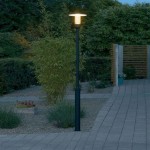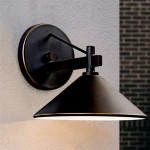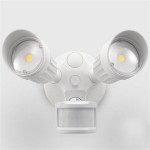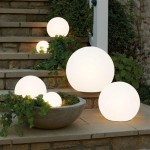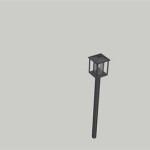Using Borax to Clean Outdoor Cushions
Outdoor cushions are essential for comfortable seating in patios, decks, and gardens. However, exposure to the elements, including sunlight, rain, and dirt, can lead to the accumulation of stains, mildew, and unpleasant odors. Regular cleaning is crucial to maintain the appearance and longevity of these cushions. Borax, a naturally occurring mineral compound, offers a cost-effective and relatively safe alternative to harsh chemical cleaners for this purpose. This article explores the use of borax in cleaning outdoor cushions, detailing its benefits, methods, and precautions.
Borax, also known as sodium borate, is a white, powdery substance composed of boron, sodium, oxygen, and water. It functions as a natural cleaner, deodorizer, and disinfectant. Its mild alkalinity helps to break down dirt and grease, while its disinfectant properties inhibit the growth of mold and mildew. When used correctly, borax provides a viable option for cleaning a variety of household items, including outdoor cushions, without the environmental impact associated with some synthetic cleaning agents.
Benefits of Using Borax for Cleaning Outdoor Cushions
The selection of a cleaning agent for outdoor cushions is often guided by a combination of effectiveness, safety, and cost. Borax offers several advantages in these areas:
Cost-effectiveness: Borax is generally available at a lower price point compared to specialized outdoor fabric cleaners. This makes it an economical choice for individuals looking to maintain their outdoor furniture without incurring significant expenses. A single box of borax can last for multiple cleaning sessions, reducing the overall cost per use.
Mild Cleaning Action: Borax is less harsh than many chemical-based cleaners, which reduces the risk of damaging the fabric of the outdoor cushions. Strong chemicals can cause fading, discoloration, or even the deterioration of the cushion material over time. Borax provides a gentler cleaning action that effectively removes dirt and grime without these adverse effects.
Mold and Mildew Inhibition: One of the primary challenges in maintaining outdoor cushions is the prevention of mold and mildew growth. Borax has natural antifungal properties that help to inhibit the development of these microorganisms. Regular cleaning with a borax solution can help to keep cushions looking and smelling fresh, extending their lifespan.
Deodorizing Properties: Outdoor cushions can often absorb unpleasant odors from exposure to moisture, pets, or food spills. Borax is an effective deodorizer that neutralizes these odors, leaving cushions smelling clean and fresh. This is particularly beneficial for cushions that are subject to frequent use or exposure to outdoor elements.
Environmentally Friendly: Compared to many synthetic cleaning products, borax is considered a more environmentally friendly option. It is a naturally occurring mineral and does not contain harsh chemicals that can harm ecosystems. While it is important to use borax responsibly, its environmental impact is generally lower than that of many commercial cleaners.
Methods for Cleaning Outdoor Cushions with Borax
The specific method for cleaning outdoor cushions with borax will depend on the type of stain or grime and the material of the cushion. It is always advisable to test the cleaning solution on a small, inconspicuous area of the cushion before applying it to the entire surface. This will help to ensure that the solution does not cause any discoloration or damage to the fabric.
General Cleaning Solution: For routine cleaning and maintenance, a general borax cleaning solution can be prepared by dissolving one-half cup of borax in one gallon of warm water. The solution should be thoroughly mixed until the borax is completely dissolved. This mixture can then be applied to the cushions using a sponge, cloth, or spray bottle.
Once the solution is applied, the cushions should be scrubbed gently to remove dirt and grime. For heavily soiled areas, a soft-bristled brush can be used to improve cleaning effectiveness. After scrubbing, the cushions should be rinsed thoroughly with clean water to remove any residue from the borax solution. It is important to ensure that all traces of the cleaning agent are removed to prevent potential skin irritation or discoloration of the fabric.
Finally, the cushions should be allowed to air dry completely. Ideally, this should be done in a well-ventilated area away from direct sunlight, which can cause fading. The drying process may take several hours or even a full day, depending on the weather conditions and the thickness of the cushions.
Stain Removal: For specific stains, such as those caused by food spills, mildew, or mold, a more concentrated borax solution may be necessary. A paste can be made by mixing borax with water until a thick consistency is achieved. This paste can then be applied directly to the stain and allowed to sit for 30 minutes to an hour. The duration will depend on the severity of the stain.
After the paste has had time to work, the area should be scrubbed gently with a soft-bristled brush or sponge. The stain should gradually lighten or disappear as the paste is worked into the fabric. Once the stain has been removed, the area should be rinsed thoroughly with clean water to remove any remaining borax residue.
For stubborn mildew or mold stains, a solution of borax and hydrogen peroxide can be used. Mix equal parts of borax and hydrogen peroxide to form a paste. Apply the paste to the affected area and allow it to sit for several hours, or even overnight. This will give the hydrogen peroxide time to kill the mold and mildew spores. The area should then be scrubbed gently and rinsed thoroughly with clean water.
Deodorizing Cushions: To deodorize outdoor cushions, borax can be used as a dry powder. Sprinkle a generous amount of borax powder over the entire surface of the cushions and allow it to sit for several hours, or overnight. The borax will absorb odors and help to freshen the fabric. After the borax has had time to work, it can be vacuumed up using a standard vacuum cleaner with an upholstery attachment. This method is particularly effective for removing odors caused by pets, moisture, or food spills.
Precautions When Using Borax
While borax is generally considered a safer alternative to many chemical cleaning products, it is still important to take certain precautions when using it. Borax can cause skin and eye irritation in some individuals, so it is important to wear gloves and eye protection when handling the product. Inhaling borax dust can also be irritating to the respiratory system, so it is advisable to work in a well-ventilated area.
Skin and Eye Irritation: Direct contact with borax can cause skin irritation, redness, and itching. Similarly, if borax comes into contact with the eyes, it can cause irritation, burning, and tearing. It is important to avoid direct contact with the skin and eyes and to wash thoroughly with soap and water after using borax. If borax gets into the eyes, they should be flushed immediately with plenty of water for at least 15 minutes.
Ingestion: Borax is not intended for ingestion and can be harmful if swallowed. It can cause nausea, vomiting, and diarrhea. In severe cases, it can even lead to more serious health problems. Borax should be kept out of reach of children and pets to prevent accidental ingestion. If borax is swallowed, medical attention should be sought immediately.
Respiratory Irritation: Inhaling borax dust can cause irritation to the respiratory system, leading to coughing, sneezing, and shortness of breath. It is important to avoid breathing in borax dust and to work in a well-ventilated area when using the product. Wearing a dust mask can also help to prevent respiratory irritation.
Fabric Sensitivity: While borax is generally gentle on fabrics, it can still cause discoloration or damage to certain materials. It is always advisable to test the borax solution on a small, inconspicuous area of the cushion before applying it to the entire surface. This will help to ensure that the solution does not cause any adverse effects. Delicate or specialty fabrics may require alternative cleaning methods.
Environmental Considerations: While borax is considered a more environmentally friendly option than many chemical cleaners, it is still important to use it responsibly. Excessive use of borax can potentially harm aquatic ecosystems. It is important to use borax sparingly and to dispose of wastewater properly. Avoid pouring borax solutions directly into drains or waterways.
By understanding the benefits, methods, and precautions associated with using borax to clean outdoor cushions, individuals can effectively maintain their outdoor furniture while minimizing risks to their health and the environment. Consistent and careful application of these techniques will contribute to the longevity and appearance of outdoor cushions, enhancing the enjoyment of outdoor spaces.

How To Clean Your Outdoor Cushions And Patio Furniture Reviewed

Cleaning Patio Cushions Diy The Cards We Drew

7 Easy Ways To Clean Mold Off Patio Cushions And How Prevent It Www Homelifeleisure Com

How To Clean Outdoor Cushions For Longevity Pro Housekeepers

How To Clean Outdoor Cushions

How To Clean Outdoor Cushions

Queen Of Clean Best Ways To Patio Furniture

How To Clean Outdoor Cushions For Longevity Pro Housekeepers

How To Clean Outdoor Cushions That Are Not Removable Maidforyou

How To Clean Outdoor Cushions Using Borax Cushion Factory
Related Posts
